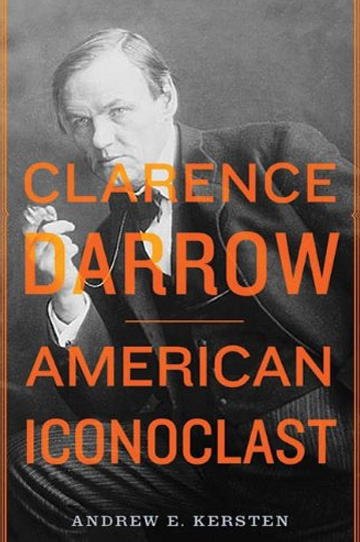On the first page of this biography, Andrew Kersten calls Clarence Darrow America’s greatest lawyer. That’s not quite right. The title cannot belong to a man who tried to bribe a jury, represented the mafia, and defended unrepentant murderers and terrorists for the right fee — not when there are Thurgood Marshall, Louis Brandeis, and Charles Hamilton Houston to choose from. That said, it is beyond dispute that Darrow was a master in the courtroom, particularly in cross-examination and closing argument. He married a skeptical intellectualism to the savvy of an expert huckster, resting his foot on the jury box as he quoted Tolstoy and aimed for the spittoon.
Darrow had a talent for finding his way into cases that combined great liberal principles with flashbulb publicity. He fought creationism in the Scopes monkey trial; defended labor leaders and anarchists from conspiracy charges; and represented blacks in Detroit who fired back at a lynch mob. He also served a term as a state legislator in Illinois, and made speeches and wrote books espousing a surly, progressive, but unpredictable politics. Today we might call him a lefty maverick.
Mavericks make enemies, and Darrow had plenty. The labor movement and its socialist captain, Eugene V. Debs, never forgave Darrow for directing his clients to plead guilty in the Los Angeles Times bombing case. (A pair of labor activists dynamited the editorial offices of the anti-union paper, killing 21, and Darrow led the defense.) Civil rights leaders were appalled when he defended the white murderers of a native Hawaiian who had been falsely accused of raping a white woman. And the women’s movement — which Darrow had once supported — watched him turn away during the debate and passage of the 19th Amendment, which gave women the vote. One of his most famous cases, the defense of young murderers Leopold and Loeb, was on one level a struggle against the death penalty and a retributive system of criminal punishment. Closer to the pavement, Darrow defended the two sadistic killers because their families were rich and promised to pay handsomely.
“Clarence Darrow: American Iconoclast” is, as Kersten admits, the umpteenth biography of the Old Lion. At under 300 pages it cannot compete with the comprehensive studies like Kevin Tierney’s “Darrow: A Biography.” Yet the book is a highly readable survey of Darrow’s major cases and adventures, given from the perspective of a labor historian. It has two weaknesses. The first is the author’s tendency to give his subject a free pass. For instance, Kersten leaves intact Darrow’s absurd justification for abandoning women’s suffrage: “He doubted that widening the polity would have any effect on politics for average Americans.” Second, Kersten defines Darrow’s political and social mission so broadly that it becomes meaningless: an inconsistent civil libertarian, labor man, and civil rights advocate, Darrow always sought to advance “freedom and liberty.” Under this squishy definition, every case Darrow took fits under the same enormous roof that also houses the John Birch society, birthers, and Jean-Marie Le Pen.
The attempt to label Darrow fails not only because of his unpredictability, but also because, like most lawyers, he was at bottom a hired gun, motivated less by right and wrong than by what his client required. It is for this reason that few lawyers are remembered. Then again, few of them could put on a show quite like Darrow.







